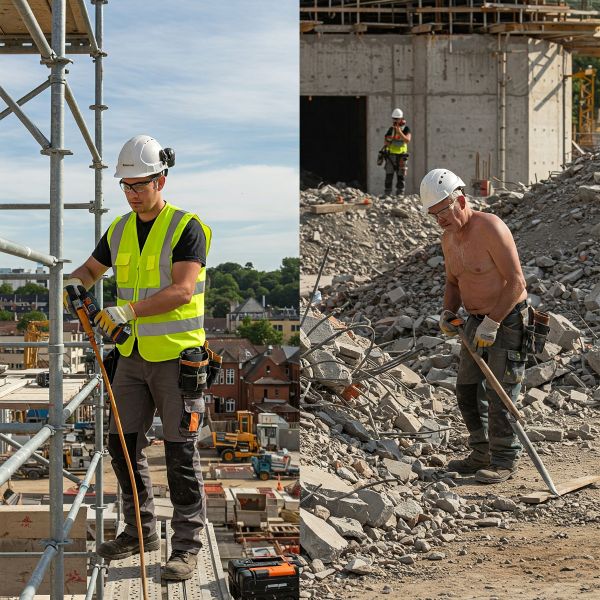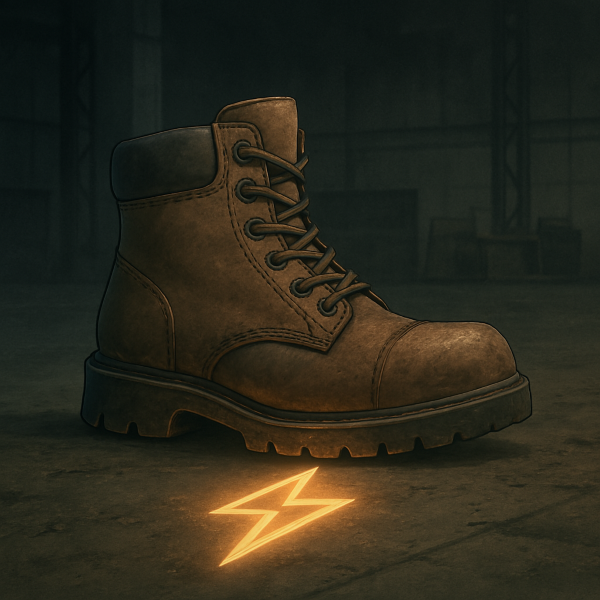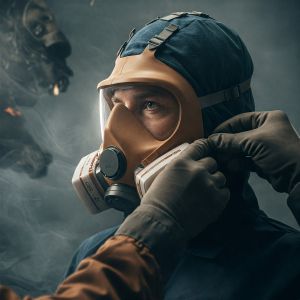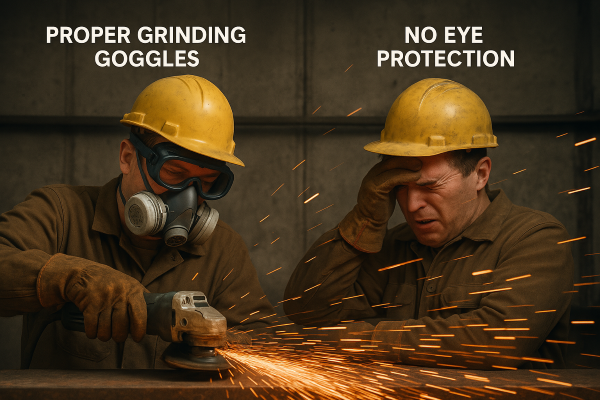Fit Testing: Why Respirator Fit Can Make or Break Your Safety
When it comes to respiratory protection, the quality of the mask isn’t the only thing that matters—fit is everything. A high-grade respirator that doesn’t seal properly is like a leaky umbrella in a downpour: ineffective and potentially dangerous. That’s where fit testing comes in.
Whether you’re a construction worker, healthcare provider, lab technician, or simply someone preparing for emergencies, fit testing ensures your respirator actually protects you. In this guide, we’ll break down what fit testing is, why it matters, how it’s done, and the best fit test kits you can use today.
What Is Fit Testing?
Fit testing is a procedure used to determine if a respirator properly seals to a person’s face. The goal? To prevent harmful airborne contaminants from slipping in through gaps around the mask.
There are two main types of fit tests:
- Qualitative Fit Testing (QLFT): A pass/fail test using the user’s sense of taste or smell to detect leakage.
- Quantitative Fit Testing (QNFT): Uses a machine to measure the exact amount of leakage into the respirator.
Both are essential in professional settings governed by OSHA standards, and they serve different purposes depending on the type of respirator used.
Why Fit Testing Matters
Even a high-quality N95 or half-face respirator can fail without the right seal. Here’s why proper fit testing is non-negotiable:
- Protects from airborne hazards: Like silica, asbestos, bacteria, and viruses.
- Meets regulatory compliance: Required by OSHA (29 CFR 1910.134) in the U.S.
- Boosts user confidence: Ensures the wearer knows their gear works.
- Saves lives in high-risk environments: Especially in healthcare, industrial, and emergency response roles.
How Fit Testing Works
Qualitative Fit Testing (QLFT)
Used mostly for disposable respirators (like N95s) and half-mask respirators, this method relies on the wearer’s ability to detect test agents like:
- Saccharin (sweet taste)
- Bitrex (bitter taste)
- Isoamyl acetate (banana smell)
- Smoke or irritant test (cough reflex)
If the wearer tastes or smells the test substance, the mask fails.
Quantitative Fit Testing (QNFT)
This method uses a PortaCount or similar device to measure actual leakage and assign a fit factor. It’s typically used for:
- Full-face respirators
- Tight-fitting powered air-purifying respirators (PAPRs)
- Situations where a numerical score is essential
Common Fit Testing Steps
- Medical clearance (for workers)
- Mask selection (based on job/task)
- Donning instructions and seal check
- Fit testing procedure
- Result evaluation
- Annual re-testing or whenever the user’s face changes
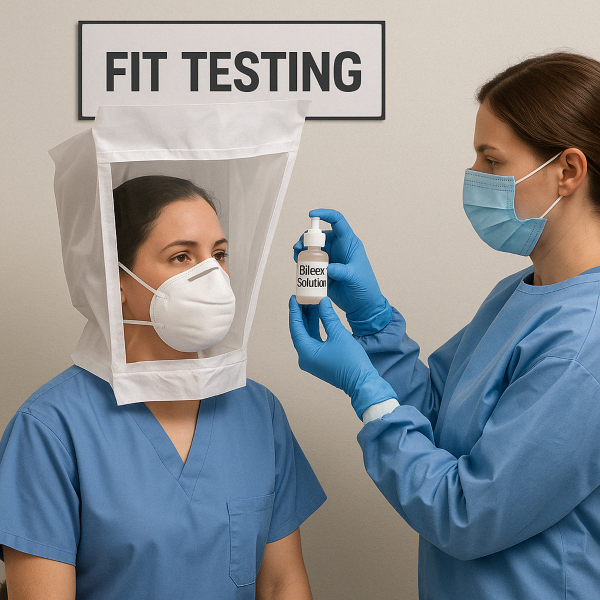
Who Needs Fit Testing?
Fit testing isn’t just for industrial workers. It’s required or strongly recommended for:
- Healthcare workers in infectious disease units
- Construction crews working with dust, silica, or asbestos
- Firefighters and EMS using full-face respirators
- Lab technicians handling chemicals or biohazards
- Anyone using tight-fitting respirators for extended periods
Best Fit Test Kits for 2025
Here’s a comparison of top fit testing kits available this year:
| Product Name | Type | Test Agent | Works With | Price Range |
|---|---|---|---|---|
| 3M FT-30 Kit | QLFT | Bitrex (bitter) | N95, half masks | $178.50 |
| Allegro 2040 Kit | QLFT | Saccharin (sweet) | N95, reusable respirators | $80.59 |
| TSI PortaCount Pro+ 8048 | QNFT | Particle counting | All tight-fitting masks | $6,651.00 |
| OHD Quantifit 2 | QNFT | Controlled Negative Pressure | Full-face respirators | $10,500.00 |
| Moldex Fit Test Kit | QLFT | Saccharin | Moldex respirators | $659.00 |
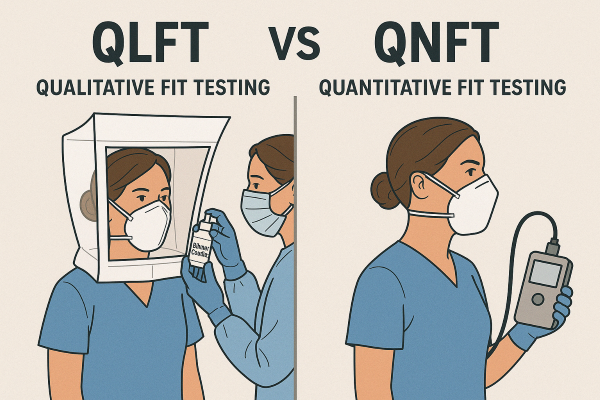
Practical Use Cases
In Hospitals
Nurses and doctors rely on N95 respirators to block airborne pathogens. Fit testing ensures no gaps exist during a 12-hour shift.
In Construction
Workers using saws or sanders are exposed to fine silica dust. A tight seal can mean the difference between healthy lungs and long-term illness.
In Emergency Response
First responders dealing with chemical spills or biohazards need full-face respirators. A proper fit is vital when every breath counts.
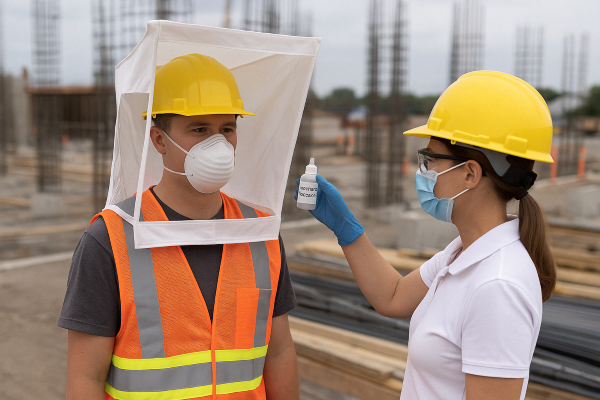
Fit Testing Safety Tips
- Don’t eat or drink 15 minutes before testing
- Always perform a seal check before each use
- Re-test after weight change, dental work, or facial surgery
- Train employees to recognize poor fits or discomfort
- Maintain your respirator according to manufacturer guidelines
Visual Summary: Fit Testing Methods
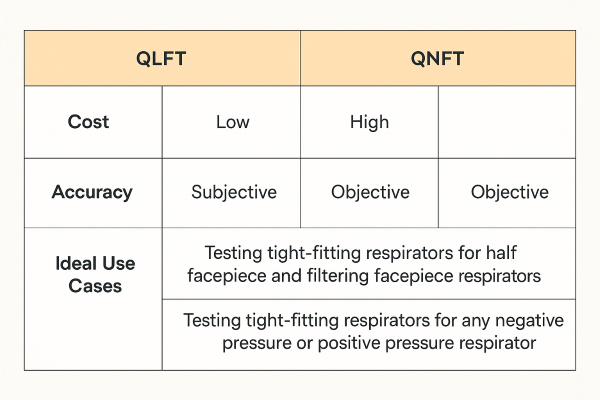
Final Thoughts: Don’t Just Wear It—Test It
Respirators are your first line of defense in hazardous environments. But without a proper fit, even the best mask is useless. Fit testing ensures your gear does what it’s designed to do: protect you.
Whether you’re outfitting a team or looking out for your own health, invest in a fit test—it’s a small step that makes a big impact.
Take action today: evaluate your respirator gear, schedule a fit test, or explore the best kits available. Your lungs will thank you.


